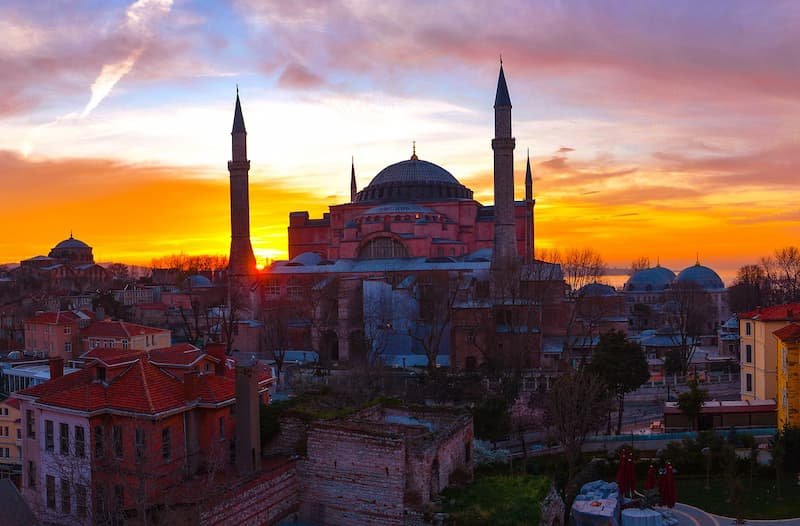Table of Contents
Turkey, a country where the East meets the West, is an enchanting mosaic of history, culture, and natural beauty. From the bustling bazaars of Istanbul to the sun-kissed Mediterranean coast, the majestic ruins of Ephesus to the fairy-tale landscapes of Cappadocia, this diverse nation promises an unforgettable experience to every visitor. As tourists wander through the cobbled streets, they are treated to a captivating blend of ancient and modern worlds, where Byzantine churches coexist with sleek, contemporary designs.
In recent years, however, a new and exciting narrative is taking shape in Turkey’s architectural scene. A surge of modernism is sweeping through its residential properties, as architects and designers are increasingly looking towards the future while paying homage to the rich past. This wave of modern architecture is not only redefining the skylines of cities like Istanbul, Izmir, and Ankara but is also reshaping the way Turks live, interact, and inhabit their spaces.
In this article, we will embark on a journey that explores the rise of modern architecture in Turkey’s residential properties. We will delve into the ways in which contemporary designers are infusing innovation with tradition, the policy and economic forces driving this transformation, and the impact that this architectural renaissance is having on Turkey’s urban and rural landscapes alike.
Prepare to be inspired by Turkey’s evolving story, one that is etched not only in the stone of its ancient landmarks but also in the clean lines and sustainable practices of its modern homes and communities. Join us as we explore how the rich tapestry of Turkish culture is being reimagined through the lens of modern residential architecture.
The Turkish property designs grew from a mixture of functionality, modernization, and a combination of history. Turkey has one of the oldest relevant in the world, with influences from the Ottoman eras and the earliest times of civilization.

Ancient Designs
In earlier times, people-built housing using materials they could find around. Man understood the need for shelter from harsh weather conditions, and they had to utilize items found on shores and around them.
- At first, there was cave-life living where shelter was sought between the caves’ halls. These caves protected inhabitants from direct weather implications such as rain, snow, and even sunlight, as the caves are often regulated within. An example of such is the Damlatas Cave which was discovered to have housed ancient civilization as there were markings within its walls. However, these caves were colder, and as civilization outgrew the available caves, Turks started to look for alternatives.
- Then came the use of stones and Palm Fronds/wooden materials to build beach-side homes. The earliest civilization naturally developed around water bodies and by the ocean, where they hunted seafood and ate from the forests.
Modern Designs
Modern importation of designs began along with the importation of cultures. The Ottomans came with their housing ideas, and traces are found among the Turk people to date. In recent times, especially in the last few centuries, the focus has been on improving home comfortability and modernizing and fine-tuning apartments.
Building Types in Turkey and Their Origins
Here are the types to expect if you are buying real estate for investment in Turkey. According to Turk.Estate here is the modern architectural property types in Turkey:
Ottoman Houses/Designs

The Ottomans make up a substantial amount of Turkish history, and so does the kind of housing they built back then or which they loved living in. To date, you can find Ottoman houses in many parts of the country, particularly around Beypazari and Safranbolu. They have stone foundations to protect against severe floodings; usually, story buildings are painted white, with multiple full windows and red-brownish roofing sheets.
Turkish Stone Cottages
Whitewashed stones decorated with bluish outside windows. The windows of the Turkish Stone cottages are built like top compartments and shoot out, painted bright blue. They are a spillover from the stone building eras. You can find a sizable number of these in Izmir and Fethiye.
Cave Houses

Man lived in caves; to date, some have been preserved – the Cave House of Cappadocia, for example. These are carved out of large rocks/stones, designed on the inside, while the walls are designed in sharp carves. These are no longer being built now but are in preservation status. You will find many in Cappadocia.
Yayla Plateau Houses
The Yayla Plteau Houses originated from forest inhabitants many centuries ago. They were made from wood derived from felling trees in the forest. Back in the day, very few people lived in those mountainous regions, so it was extremely cold. The Turks built the houses on two floors in a plateau form such that the ground floor is like an entry point. They bred animals downstairs to create heat, and wild animals also wandered there without climbing up. These properties still exist in the Ayder plateau, Uzungol, and Kackar mountain regions.
Wooden Homes

Find the ancient wooden houses of Turkey on Sogukcesem Street. These dates to when Turks were mostly nomadic, including the iconic Yali homes. They were developed using mahogany and similar wooden properties. Due to multiple fire incidents, they were banned in the 19th century but are now being preserved for tourism and historical purposes.
Where to find Historic Houses for Sale in Turkey
These are the general categories; in most recent times, cave houses, though relevant for historical purposes, are no longer being built or designed. However, you can find a decent translation of the other property types in various locations scattered across Turkey. One interesting fact about Turkey is that every city in Turkey has a rich history and a sizeable amount of these houses.
At CarRental.Deals we are confident that renting a car in Turkey is a perfect choice for several reasons:
Flexibility & Convenience: Having your own vehicle allows you to travel at your own pace and explore areas that are not easily accessible by public transport. You can plan your own route and spend as much time as you want in each location.
Variety of Destinations: Turkey is a vast and diverse country, with bustling cities, picturesque coastal towns, and historical sites. With a rental car, you can easily travel between major cities like Istanbul, Ankara, and Izmir, as well as explore lesser-known areas in regions like Cappadocia, Pamukkale, and Eastern Anatolia.
Scenic Drives: Turkey is home to some incredibly scenic drives, such as the Turquoise Coast along the southwestern coastline. A rental car allows you to fully enjoy these beautiful landscapes.
Cost-Effective for Groups: If you are traveling with family or a group, renting a car can often be more cost-effective than buying multiple public transport tickets.
Comfort & Safety: Renting a car lets you travel in comfort, and in many cases, a newer model car with good air conditioning and safety features.
Cultural Immersion: A rental car gives you the opportunity to venture off the beaten path, visit small villages, and engage more deeply with local culture.
Avoiding Crowds: With your own car, you can avoid crowded buses or trains and have a more personal and enjoyable travel experience.
So, renting a car in Turkey provides an unparalleled opportunity to explore both the country’s major cities and its lesser-known areas, offering flexibility, convenience, and a chance to experience the rich and diverse culture of Turkey at your own pace.










